May 23, 2025 | 04:47 GMT +7
May 23, 2025 | 04:47 GMT +7
Hotline: 0913.378.918
May 23, 2025 | 04:47 GMT +7
Hotline: 0913.378.918
Following the recent rainfall, I accompanied Le Van Tam, Director of the Nha Sap Farmers Cooperative in Vinh Dieu Commune, Giang Thanh District, Kien Giang Province, to inspect an advanced insect monitoring system installed in the middle of a rice field. The system, protected by a sturdy metal frame and secure locks, occupies just over 2 square meters of the field but is often regarded as the "watchful eye of the field." It has enabled local farmers to effectively manage pests across several thousand hectares of rice production area.

Agricultural extension officers and members of the Nha Sap Farmers Cooperative in Giang Thanh District, Kien Giang Province, monitoring updates from the advanced insect monitoring system on their smartphones. Photo: Trung Chanh.
After opening the protective metal frame, Director Le Van Tam removed a large plastic bucket filled with dead insects for disposal, explaining: "These insects were attracted and identified by the monitoring system. With this system, farmers no longer need to wade through the fields to inspect for pests by hand."
The young director, along with several cooperative members, demonstrated the system on their smartphones, stating: "With just a smart phone, farmers can easily track pests on the fields and determine the precise timing for pesticide application, consequently eliminating the need to physically inspect the fields. The smart insect monitoring system has significantly improved our pest management efforts."
The smart insect monitoring system functions similar to an attractant trap, drawing various insects for counting and issuing alerts, ultimately replacing the manual leaf inspection traditionally performed by farmers. Situated in the middle of the field, the system features a visually striking display of colored lights, including blue, green, white, and UV purple. The lights continuously cycle through different colors to lure pests. Every 30 minutes, the system automatically cleans the light traps to update data.
Similarly, Tan Hoa Farmers Cooperative in Ban Tan Dinh Commune, Giong Rieng District, Kien Giang Province, has also installed an smart insect monitoring system to assist in pest management.
Pham Van Viet, Deputy Director of Tan Hoa Farmers Cooperative, noted that the coopeartive manages a large production area spanning over 1,000 hectares, divided into two sections. With rice production occurring three times a year, managing the fields and controlling pests throughout the seasons requires substantial effort.
With the help of solar energy and battery storage, Rynan's intelligent insect monitoring system can ensure continuous operation over large areas such as rice fields, vegetable crops, and extensive agricultural zones, without relying on the national power grid.
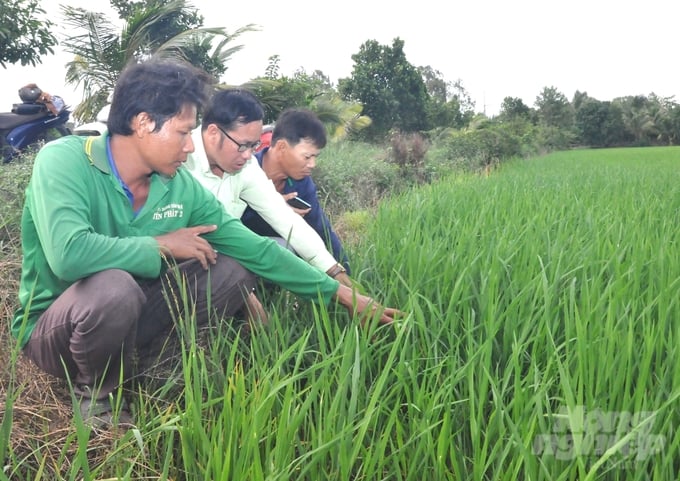
The smart insect monitoring system has eliminated the need for agricultural officials and farmers to perform the laborious task of manually inspecting. This innovative approach reduces labor intensity as well as accelerates and enhances the accuracy of pest forecasting and advisory services. Photo: Trung Chanh.
Tan Hoa Cooperative has received support from the agricultural sector in implementing the smart insect monitoring system since 2023. The system has demonstrated its effectiveness after three rice production cycles. Accordingly, it provides continuous field monitoring, uploads data online, and allows farmers to track pest activity through a mobile app at their convenience.
The system is capable of monitoring nearly all types of pest on rice and distinguishing between beneficial and harmful insects. By analyzing the number of insects attracted to the device, the software classifies and calculates the density of pest per square meter. When this figure reaches a predetermined threshold, the system alerts farmers, indicating the optimal time for pesticide application. As a result, the system facilitates effective pest control, reducing the need for pesticide applications by two to three times per crop, thereby reducing costs and minimizing environmental impact.
The smart insect monitoring system, developed by Rynan Technologies Vietnam (based in Tra Vinh Province), employs artificial intelligence algorithms to automatically identify, quantify, and classify pest species. It distinguishes between beneficial and harmful insects, enabling prompt identification for agricultural experts and farmers.
In addition to pest monitoring, the system also integrates weather forecasting features, including the monitoring of wind speed, wind direction, temperature, and humidity, to provide valuable support to farmers throughout the crop cycle.

Agricultural extension officers in Ban Tan Dinh Commune, Giong Rieng District, Kien Giang Province, inspecting the smart insect monitoring system funded by the agricultural sector at the Tan Hoa Farmers Cooperative. Photo: Trung Chanh.
Prior to the introduction of the smart insect monitoring system, agricultural officials performed field inspections in coordination with local farmers or utilized night-time light traps to attract flying insects. Subsequently, they carefully collected and counted each insect at the trap site the following morning, identifying each type of pest individually. The data was then recorded and reported to farmers.
The smart insect monitoring system has completely replaced the manual, nightly inspections conducted by technical staff with light traps. This transition not only reduces labor intensity but also minimizes errors in the intermediate stages such as counting, identification, and data recording. Additionally, with data transmitted directly to smartphones, accessing and managing information is undemanding, allowing for quicker and more timely pest forecasting and advisory services.
Dr. Le Van Dung, Deputy Director of the Kien Giang Province's Agricultural Extension Center, noted that in recent years, the local agricultural sector has invested in the installation of eight smart insect monitoring systems across various cooperatives. The systems have provided accurate pest forecasts and assisted farmers in efficient pest management. Notably, the province plans to invest in an additional eight systems to expand the coverage of digital pest monitoring in agricultural production areas by the end of 2024.
In addition to Kien Giang, several other provinces and cities in the Mekong Delta, including Hau Giang, Bac Lieu, Dong Thap, Tra Vinh, and Can Tho, have also invested in smart insect monitoring systems to enhance field monitoring and support agricultural development. To date, multiple systems have been installed or sponsored across various regions, expanding the scope of monitored agricultural areas.
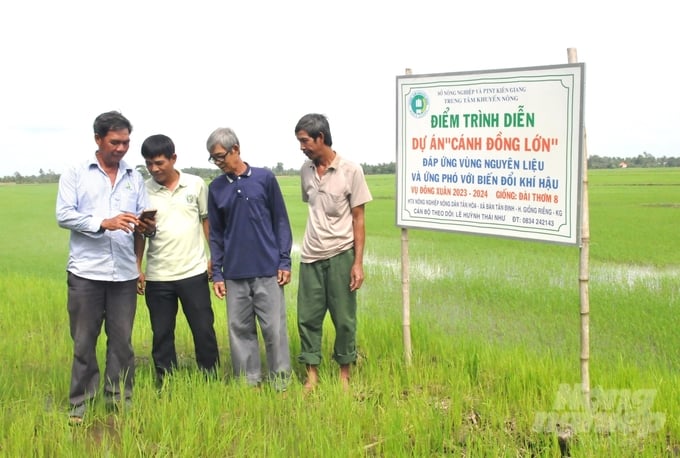
The smart insect monitoring system, funded by the Kien Giang Province's Agricultural Extension Center for cooperatives participating in the large-field project, has proven effective in protecting crops. Photo: Trung Chanh.
Rynan's smart insect monitoring system can identify approximately 120 different insect species, including brown planthoppers, green leafhoppers, white-backed planthoppers, rice leafrollers, rice yellow stem borers, fall armyworms, stink bugs, and rove beetles. However, Rynan engineers are continuously updating the system, particularly when deployed in new regions with previously unidentified insect species. For unfamiliar insects, the research team collaborates with the South Region Plant Protection Center under the Department of Plant Protection to identify and integrate new data.
This breakthrough technology allows local agricultural sectors to access information on pest conditions in fields, enabling timely recommendations and solutions for rice, vegetable, and other crop production. The system contributes to improved agricultural product quality, reduced investment costs, lower maintenance efforts, and increased farmer profitability.
Rynan engineers are actively enhancing the system's functionality. In addition to targeting light-attracted insects, they are conducting research to develop attractants for additional insect species. This expansion aims to expand the system's scope and coverage in rice, vegetable, and fruit production.
Translated by Nguyen Hai Long

(VAN) South Korea is currently the second-largest investor in Hai Phong in terms of the number of projects (186 projects) and the largest in terms of total registered investment capital, reaching USD 14.2 billion.
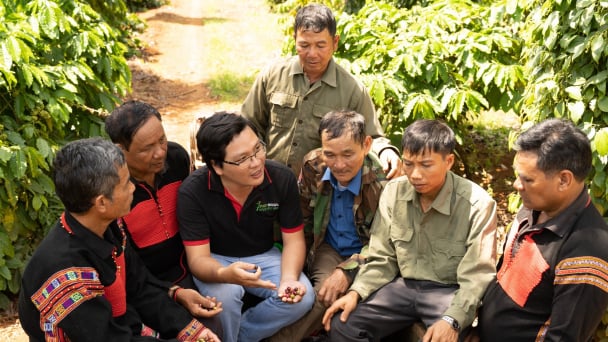
(VAN) As consumers become more environmentally conscious, legal regulations grow increasingly stringent...
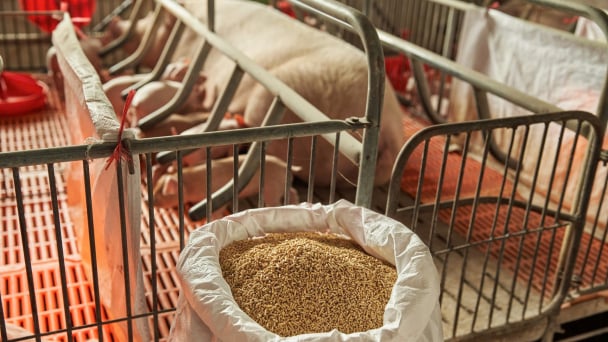
(VAN) CJ Feed&Care officially launched the FCR improvement campaign called “2025 Find Challenge Reach” in April 2025. In Vietnam, this campaign is implemented by CJ Vina Agri.
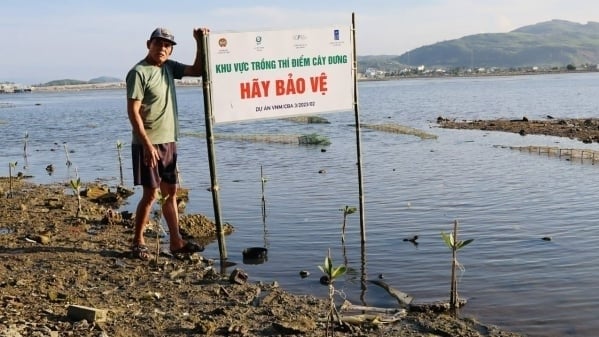
(VAN) The swamp in Pho Thanh is gradually being covered with red mangrove, creating a favorable environment for producing clean, high-quality salt.
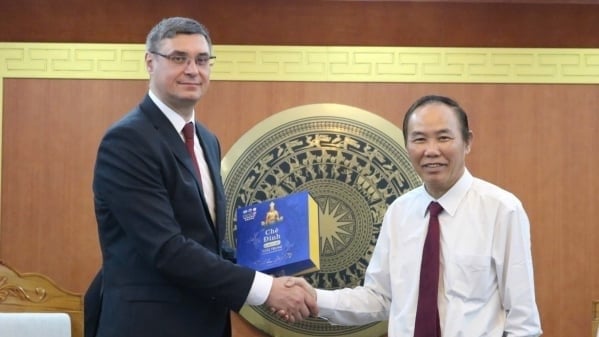
(VAN) The trade turnover of agro-forestry-fishery products is growing significantly, along with investment cooperation commitments that are opening up new development directions between Vietnam and Russia.
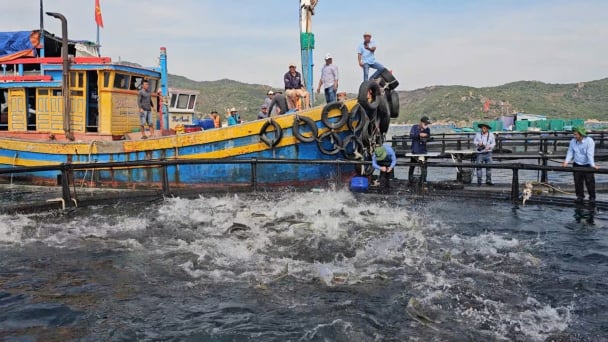
(VAN) Khanh Hoa is investing over 545 billion VND to develop 240 hectares of high-tech marine aquaculture in order to guarantee a consistent supply of seafood exports and achieve the USD 1 billion target.
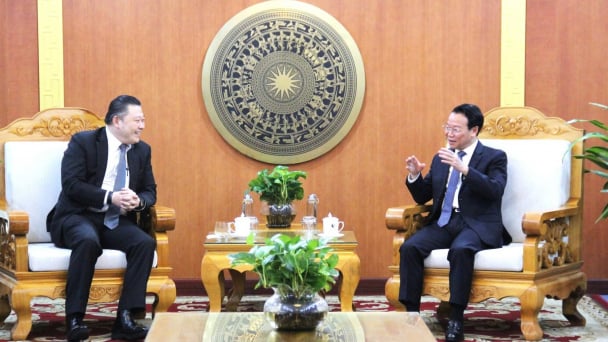
(VAN) Minister of Agriculture and Environment Do Duc Duy held a meeting with Soopakij Chearavanont, Chairman of C.P. Group, on May 15.